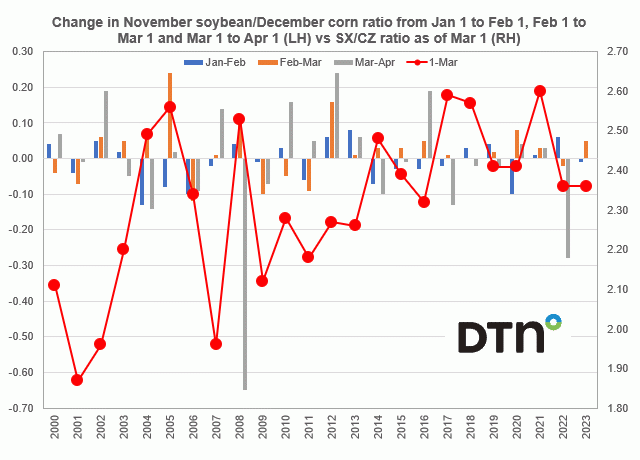
Change in the November soybean/December corn ratio from Jan 1 to Feb 1, Feb 1 to Mar 1 and Mar 1 to Apr 1 vs. the SX/CZ ratio as of Mar 1

Change in the November soybean/December corn ratio from Jan 1 to Feb 1, Feb 1 to Mar 1 and Mar 1 to Apr 1 vs. the SX/CZ ratio as of Mar 1
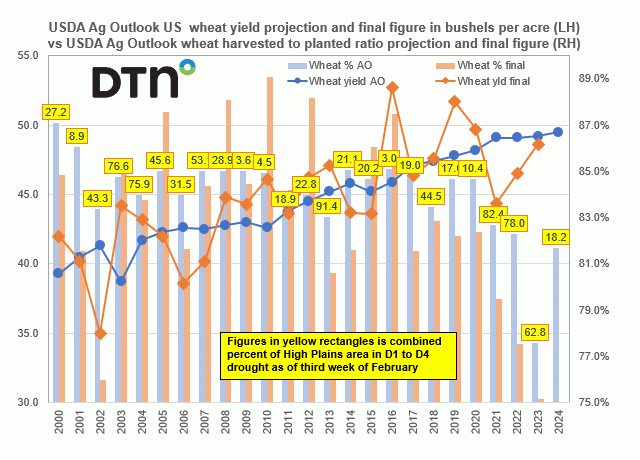
USDA Ag Outlook U.S. wheat yield projection and final figure vs. the USDA Ag Outlook wheat harvested to planted acreage ratio projection and final figure
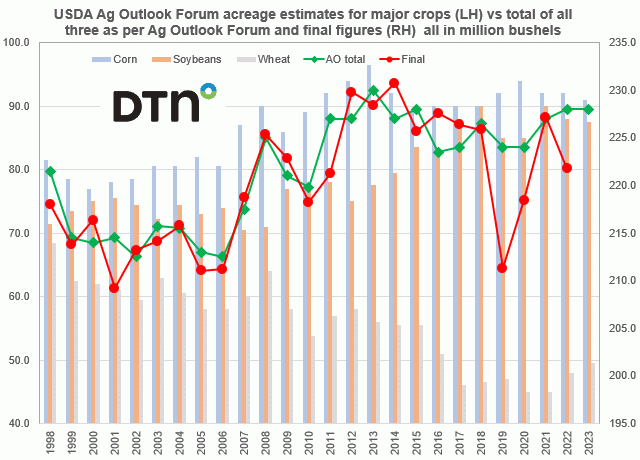
USDA Ag Outlook Forum acreage estimates for corn, soybeans and wheat vs. the total of all three as per Ag Outlook Forum and then what the total final figure was
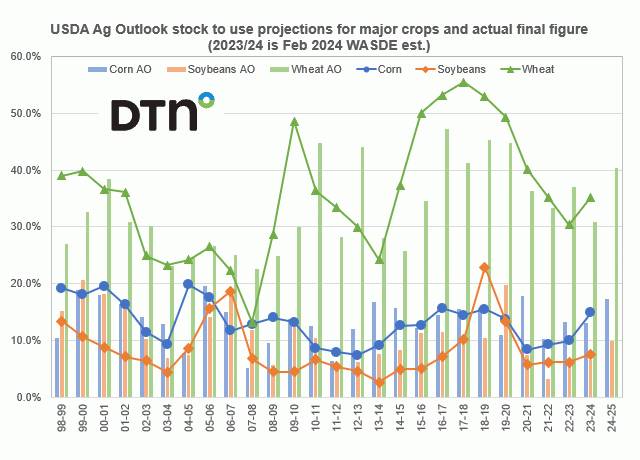
Change in the February WASDE U.S. ending corn, soybean, and wheat stocks from what was estimated a year earlier at their Feb USDA Ag Outlook vs. the percent change.
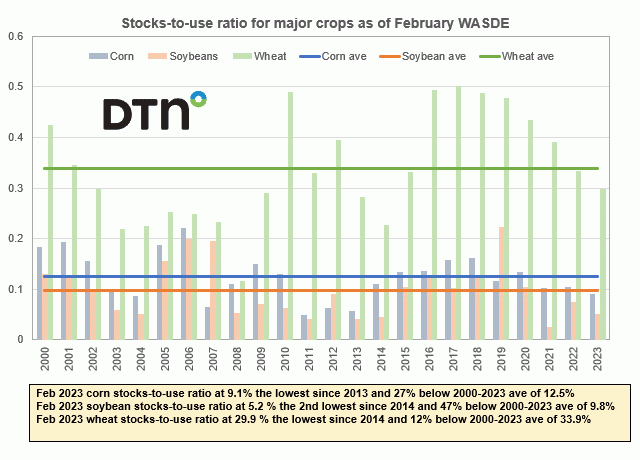
Stocks-to-use ratio as reported in the USDA's February WASDE report from 2000 to the figures furnished last week for U.S. corn, wheat and soybeans
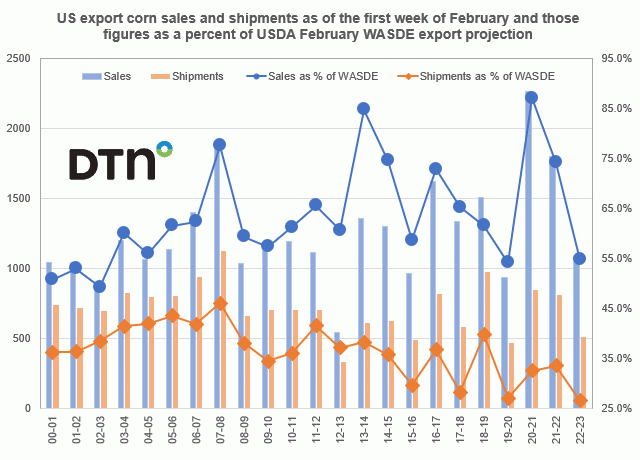
U.S. corn export sales and shipments as of the first week of February and those figures as a percent of the February WASDE projection
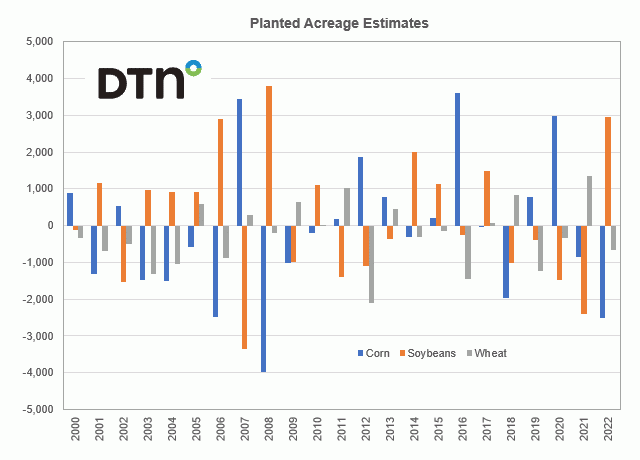
Change in planted area projections from the February USDA Ag Outlook Forum to the March prospective plantings for U.S. corn, soybeans and all wheat.
DIM[2x3] LBL[blogs-fundamentally-speaking-list] SEL[[data-native-ad-target=articleList]] IDX[2] TMPL[news] T[]
DIM[2x3] LBL[blogs-fundamentally-speaking-list-2] SEL[[data-native-ad-target=articleList]] IDX[5] TMPL[news] T[]